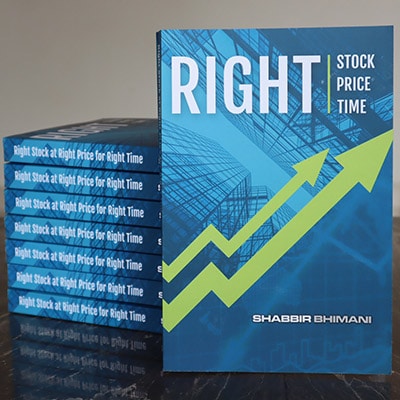The best 5 trading advice that you will ever need to read and follow to become successful in market.
Without any ado, let me get started with it.
1. Book Profit
The market is a lot different than just a mathematical formula. For example, a +10% and -10% swing means you don’t be at a no profit, no loss scenario, but you lose. Reality has traditionally been bizarre.
Let us do some calculations:
The stock price is Rs 500.
- On day 1, the stock swings up by 10%. Price becomes 550.
- On day 2, the stock swings down by 10%. Price becomes 495. 10% swing is based on 550 Rs, not 500 Rs on the second day.
So you may reverse the calculations, but…
- On day 1, the stock swings down by 10%. Price becomes 450.
- On day 2, the stock swings up by 10%. Price becomes 495. Again 10% should be based on 450.
Conclusion: Good trader always takes profit home.
2. Keep ego away and stop your losses
If you purchased a stock, there are chances you could be wrong. It is essential to recognize that you can also be wrong. No human can predict the sentiments of hundreds of thousands of investors to perfection. Aim for the right decisions more often but not always.
Once you hit stop loss, cut your losses instead of trying to prove you were right, and the market is wrong.
Let us say you purchased some stock at 100 Rs. Now it is at 80, and for some reason or other, you did nothing when the stock pricing fell from 100 Rs to 80 Rs. So the next thing people think about is let me get more at 80, so they can get out at 90 quickly. Once you buy more at 80, the stock returns to 70, and so on.
The first thing you should understand trading in the market is you can be wrong in buying the stock at 100 and so it is wise to cut your losses quickly. However, even if you did not cut the losses rapidly, it is ok to cut significant losses and start afresh.
Conclusion: Instead of trying to correct your wrong decisions, you must accept you made a mistake and come out of the stock at a loss.
3. Recover losses from different stock
Let us consider the same scenario as above. You purchased some stock at Rs 100. Now it is at 80, and you know 80 is good support for this stock. You also understand that some other stock has better charts than your stock. So instead of averaging your wrong initial stock, it is better to average a better pattern second stock. Hold the first one with a strict and trailing stop loss, come out with a comparatively lesser loss, and then profit from the second one. Trading is about making profits and losses but then outnumbering the gains to losses.
Conclusion: A stock that has not done much for you is not the only stock you should invest in to recover your money. It is ok to go with some other stock to recover your money back
4. Invest in Your Education
You cannot just open a trading account and start making a profit from the market. It cannot be as simple as that. You need to know a lot before you can trade with profit. You should
- Read Books
- Read articles online
- Attend Seminars
Once you start investing in your education, you will learn many new things, and instead of just applying them with real money, use paper trading and verify what you can achieve and not what can be achieved.
Conclusion: You should allocate a certain amount of time per week and a certain amount of money per month to enhance your skills to become a better trader. Giving time is more important than money.
5. Make the Rules and Follow them
Every market participant (trader or investor) has a set of rules he has developed over the years and needs to follow each time he executes an order. Of course, you could be driven by market sentiments, but returning to the rules is always essential.
For Trading, I have simple rules that I have even shared in my eBook here. I trade in a few chart patterns like W, Higher Top, and Higher Bottom and break out chart patterns. As a blogger, I have been tempted by many chart patterns, and after validating them, I didn’t find reasons to move away from my set of patterns.
For Investments, I have even more straightforward rules that I could just share in an article on Fundamental Analysis.
Conclusion: You can have your own rules as long as you have verified them and they work for you.
Over to you
Would you like to share any trading rules that you follow? What trading advice do you want to share? Share your views in the comments below.



Nice one! Very simply written and easy to understand even for a beginner.
Very good explaination sir
Glad you liked it milind.